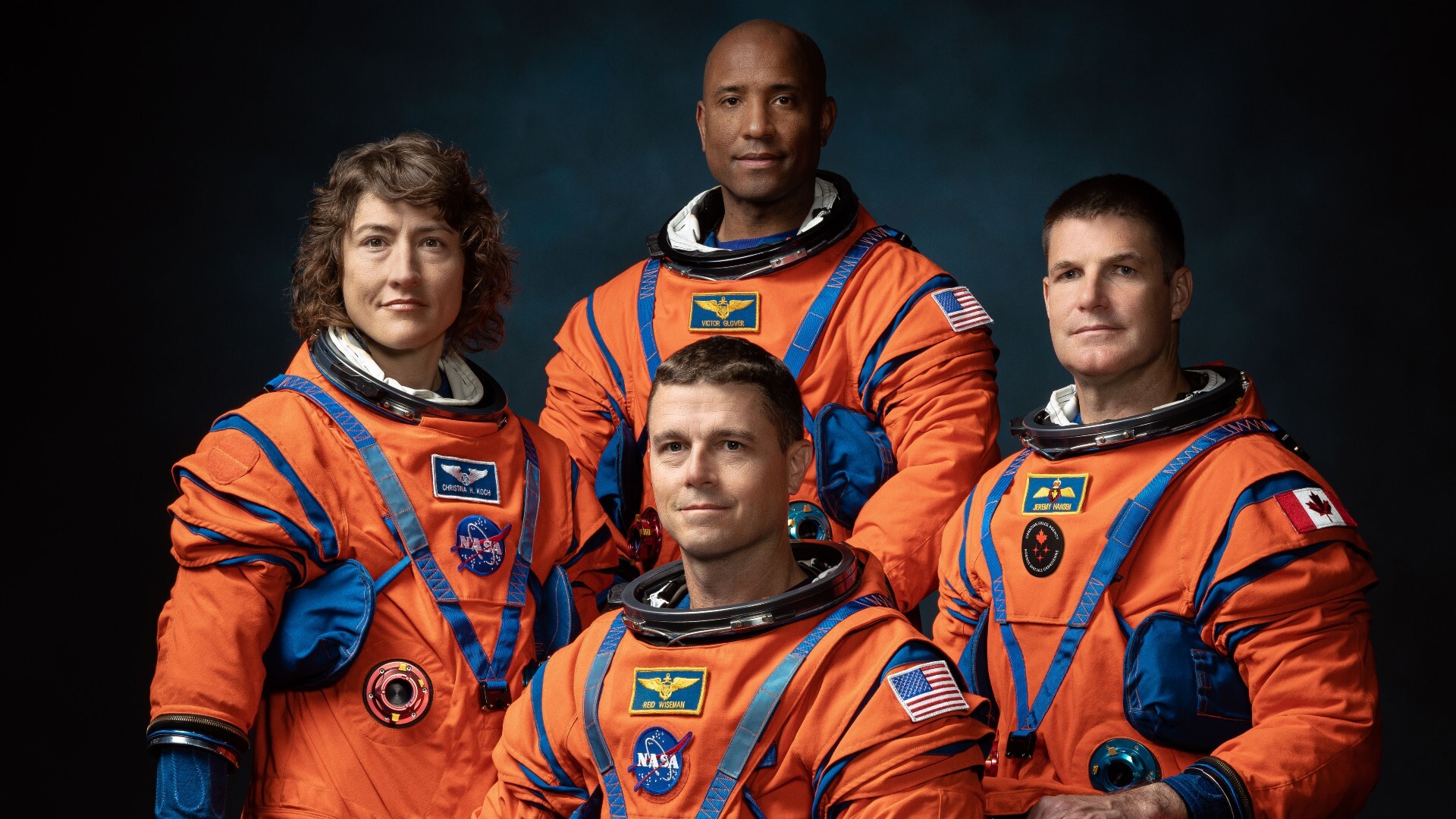NASA announces Artemis astronauts who will fly to the moon for the 1st time in 50 years
The names of the four astronauts who will make a trip around the moon on the upcoming Artemis 2 mission were announced by NASA.

NASA has announced the names of the four astronauts who will be flying to the moon for the first time since 1972.
The astronauts, who will fly on the historic Artemis 2 mission, are Reid Wiseman, Christina Hammock Koch and Victor Glover from the United States, and Jeremy Hansen from Canada. Strapped to the world’s most powerful rocket, they will embark on a 10-day journey to the moon and back in November 2024.
Artemis 2 is the second of three missions designed to test out the hardware, software and ground systems intended to one day establish a base on the moon and transport the first humans to Mars. Artemis 1, the first test flight, launched in November 2022, sending the uncrewed Orion capsule fixed to its top on a 26-day, 1.4 million-mile (2.3 million kilometers) round trip to the moon. Artemis 2’s human crew will take a similar trip, before Artemis 3, scheduled for 2025 or 2026, will send the first woman and the first person of color to land on the lunar south pole.
Related: How long will it take for humans to colonize another planet?
"Together we will usher in a new era of exploration for a new generation of star sailors and dreamers — the Artemis generation," NASA administrator Bill Nelson said at a news conference on Monday (Apr. 3). "Together we are going — to the moon, to Mars and beyond."
Reid Wiseman, the mission’s commander, is a captain in the United States Navy who in 2014 spent 165 days in orbit aboard the International Space Station (ISS). Victor Glover, who will be Artemis 2’s pilot, piloted the first mission of SpaceX’s Crew Dragon capsule to the ISS in November 2020. Victor lived on the ISS for 168 days and was the first Black man to be a crew member on the station.
Christina Hammock Koch, a mission specialist, holds the record for the longest stay by a woman in space — spending 328 days on the ISS — and with another female astronaut, Jessica Meir, completed the first all-woman spacewalk in 2019. The fourth astronaut aboard the mission will be Jeremy Hansen, a mission specialist selected by the Canadian Space Agency (CSA) for the flight. Hansen, who was a fighter pilot in the Canadian Armed Forces, will go to space for the first time with the mission.
Sign up for the Live Science daily newsletter now
Get the world’s most fascinating discoveries delivered straight to your inbox.
Artemis 2’s journey will be slightly shorter than its predecessor’s, taking the crew on a maximum 10 day voyage beyond the moon and back. The exact distance they will travel away from Earth has yet to be confirmed, but it could take the astronauts farther from Earth than any human has ever gone before, according to NASA.
After slingshotting around the moon, Artemis 2’s Orion capsule will hurtle through Earth’s atmosphere at red-hot temperatures before splashing down in the Pacific Ocean.
Koch said at the news conference that once they have launched from Kennedy Space Station, the astronauts will enter high orbit around Earth, testing out all of Orion’s systems to see how it maneuvers in space. Then, if everything looks good, they will head for the moon.
"It will be a four-day journey, going a quarter of a million miles [400,000 km]," Koch said. "Continuing to test out every bit of Orion; going around the far side of the Moon; heading home; going through the Earth's atmosphere at over 25,000 miles per hour [40,000 km/h] and splashing down in the Pacific. So am I excited? Absolutely."

Ben Turner is a U.K. based staff writer at Live Science. He covers physics and astronomy, among other topics like tech and climate change. He graduated from University College London with a degree in particle physics before training as a journalist. When he's not writing, Ben enjoys reading literature, playing the guitar and embarrassing himself with chess.









